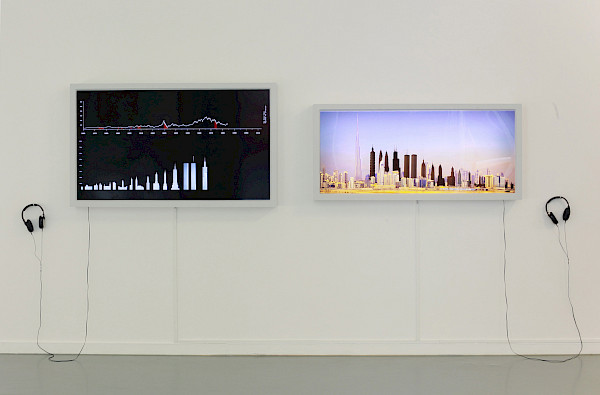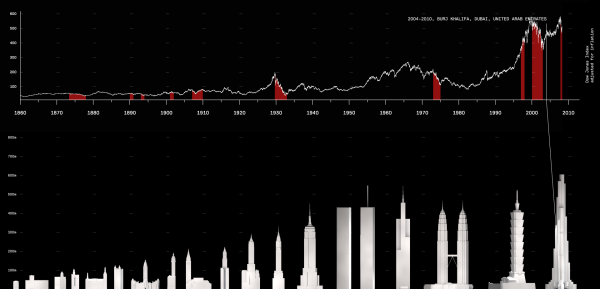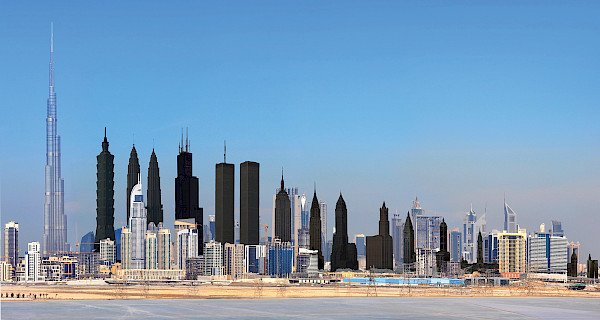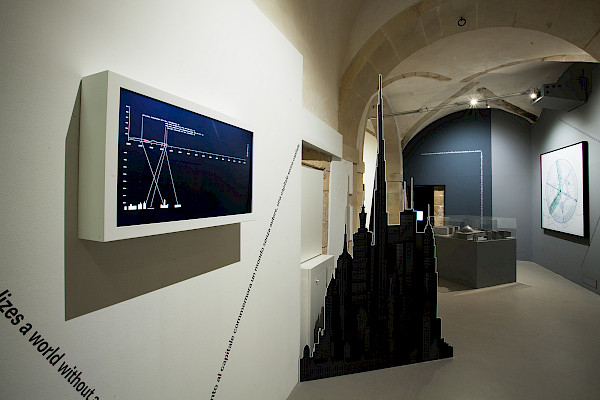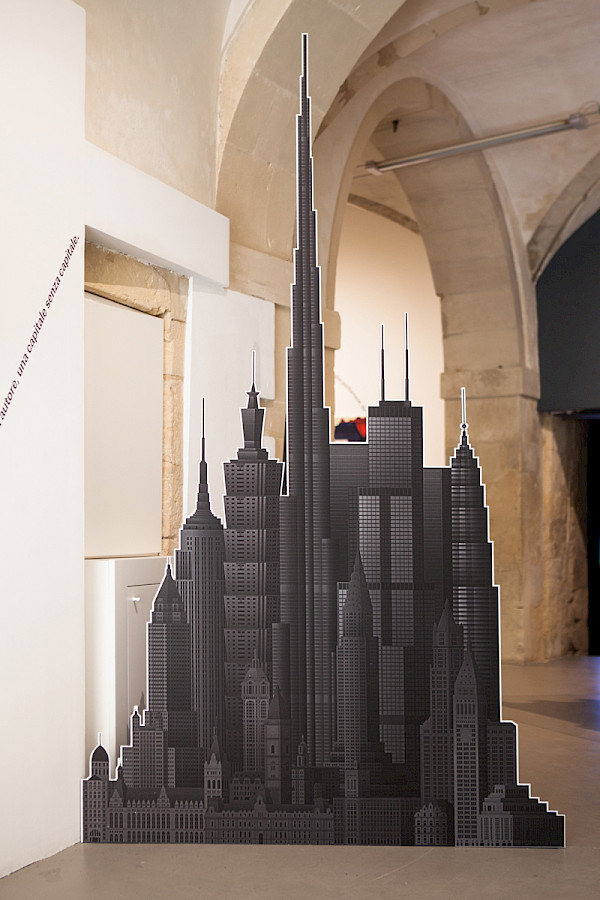Monument to Capital
2013
The long-term research project Monument to Capital takes as its point of departure the Barclays Capital’s Skyscraper Index, managed by the international investment bank Barclays. The index visualizes the “unhealthy correlation between the construction of the next world’s tallest building and an impending financial crisis.” Barclays’ argues that there is a structural relationship between economic crisis and the construction of the highest buildings of the world, from the Equitable Life Building in New York constructed in 1871 – the year of the onset of the “long depression”– to the Burj Khalifa constructed throughout the 2007-10 worldwide economic crisis.
Barclays’ research shows that at times when the Dow Jones index goes down, the highest buildings of the world literally go up, as if the architectural landmarks of high finance capitalism unconsciously respond to an unfolding crisis in an attempt to capture, to make “solid,” what would otherwise melt into thin air. The highest buildings of the world as such seem to monumentalize capital at the very moment it disappears, hence forging a global “monument to capital.”
The first iteration of Monument to Capital consisted of a video and lightbox (2013). The video reconstructs, in the form of an animation the Dow Jones Index parallel to the growth of the highest buildings of the world, for which the daily data from the price-weighted NYSE of 1860-1885 was compiled, as well as the Dow Jones TA of 1885-1896 and the Dow Jones IA of 1896-2013, adjusted for inflation. The lightbox on the other hand proposes a reversed process of construction, namely to reconstruct the formerly highest buildings of the world next to the Burj Khalifa in Dubai: building downwards, and as such attempting to revert the process of economic crisis. A further iteration of the research was realized in the form of a sculptural billboard (2016), in which the history of the highest buildings of the world are culminated into a singular construction.
-
Project by:
Jonas Staal
-
Project Team:
Jonas Staal (artist), Younes Bouadi (producer), Renée In der Maur (researcher), Lex Hildenbrand (architect), Tomasz Kaye (video producer)
-
Supported by:
The Farook Foundation, Dubai (UAE), Promoveren in de Kunsten, Amsterdam (NL), PhDArts, The Hague (NL)





